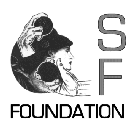Alexis Pauline Gumbs, M Archive: After the End of the World (Duke University Press, 2018, 232pp, £20.07 [Kindle only])
Reviewed by Shraddha Adityavir Singh (University of Delhi)
The second part of a triptych, M Archive is an experimental Black feminist work, in dialogue with M. Jacqui Alexander’s Pedagogies of Crossing: Meditations on Feminism, Sexual Politics, Memory, and the Sacred (2005), which refuses to adhere to any established literary genre. The first part of the triptych, Spill: Scenes of Black Feminist Fugitivity (2016), was inspired by Hortense Spiller’s work on Black feminist literary criticism and historiography. (The final part published in February 2020, DUB: Finding Ceremony, engages with the work of Sylvia Wynter and Caribbean dub poetry.) Alexander’s book used ‘crossing’ as a metaphor for many things – the transatlantic movement of African people as slaves, for queer women, women of colour, memory and structure. For Gumbs, who offers an intergenerational dialogue between women of colour in her writing, Pedagogies of Crossing appears as a footnote on every page of M Archive.
Following in the footsteps of her short story, ‘Evidence’, published in the landmark anthology Octavia’s Brood (2015), Gumbs presents her work in the form of a futuristic archive ‘written from and with the perspective of a researcher, a post-scientist sorting artifact after the end of the world’. Gumbs’s writing appears to be a mediation on what happens after the world, as we know it, ends – an annihilation of the elements of water, air, earth and even ourselves with evidence of late capitalism, anti-blackness and environmental crisis – with black feminist metaphysics materializing as the only possibility of being.
M Archive begins with ‘A Note’ which orients the reader towards not an affirmation of understanding Black people as human, but to question the definition of ‘human’ itself. In tandem with Alexander’s metaphor of crossing, Gumbs moves into the realm of the posthuman – a speculative leap into nothingness, a ‘blackness of what we cannot know’; yet, with the possibility of a blank canvas for reimagining existence. This emptiness after the end of the world also provides her with the opportunity to experiment with writing that resists capitalization, refuses to conform to literary forms or Western models of space-time and structure. The letter M, she explains, is for multitude, motherhood, magic, miracle, memory, muscle, music, must be, maybe, and more. She mentions M Archive as a work ‘after and with’ Audre Lorde, Toni Cade Bambara, Barbara Christian, Nellie McKay, June Jordan, Cheryll Y. Greene, Gloria Naylor, Jayne Cortez, Lucille Clifton, Kitchen Table Women of Color Press, and the Combahee River Collective.
The book is divided into seven sections, followed by ‘Acknowledgements’, ‘Notes’ that are footnotes to the various sections which reflect on Alexander’s text, and a bibliography, ‘Periodic Kitchen Table of Elements’, not organized alphabetically but by atomic numbers. The first section, ‘From the Lab Notebooks of the Last Experiments’, is an affirmation of Gumbs’s Afrofuturistic vision with a reflection on pain suffered by black communities. She talks about ‘the mining of melanin’ as a means to survival. The following sections, divided as ‘Archive of Dirt: What We Did’, ‘Archive of Sky: What We Became’, ‘Archive of Fire: Rate of Change’ and ‘Archive of Ocean: Origin’, incite the earth, wind, global warming and the importance of expressing emotions via tears. The poems, ‘Baskets (Possible Futures Yet to be Woven)’ and ‘Memory Drive’, meditate upon birthing, queerness, body image, love, science, social media, food, and fitness-wearable devices that can track activities like Pilates and Zumba. Futuristic images of ‘the millions of transatlantic dead’ also appear, alongside a diatribe on the process of archiving as a form of time travel that connects the archivist with their ancestors. Strewn across the beginning of four of the sections are the diagrams and sketches which correspond with the periodic element that section represents: the Archive of Fire, for example, contains a periodic table in which only Hydrogen, Nitrogen, Helium, Neon, and Iron are visible and the rest is blacked out.
This speculative documentary creatively interprets the present from a futuristic point-of-view via a lens focused on today. It may be predictive yet it is also collaborative with not just the Black feminist ancestors, but also future survivors of this moment. Queerness and gender fluidity are represented in every section, and human biology is subtly outwitted by references to self-reproductive amphibians. M Archive tells stories with no protagonists, but uses the collective ‘we’ as a reminder to the species that heeded no warnings and ultimately orchestrated a catastrophic end. For Gumbs, the only recovery can take place by using the body as a tool for remembrance.
M Archive, through its metaphors and images, announces the arrival of a future writing. It is a difficult work to read, without familiar ways of organizing a narrative, but it is a rewarding read nonetheless. The work challenges how scholarly writing, especially within academic institutions, needs to allow personal freedom to creatively engage with and recover indigenous knowledges. There are important questions raised about archive-making, and how a speculative reimagining of the archive could lead to newer ways of engagement with the past. Gumbs wants to bring to the fore ancestral speculative work as part of black feminist theory by situating M Archive ‘after and with the defunding of the humanities’. She indicates how knowledge cannot be compartmentalised into the various departments and disciplines within the neo-liberal university. Instead, she positions her work as ‘an experiment, an index, an oracle, an archive. Let this text be as alive as you are alive.’ Not completely pragmatic or nihilistic, but a reaffirmation of the past, present and future as they collapse into a single moment to be salvaged.



